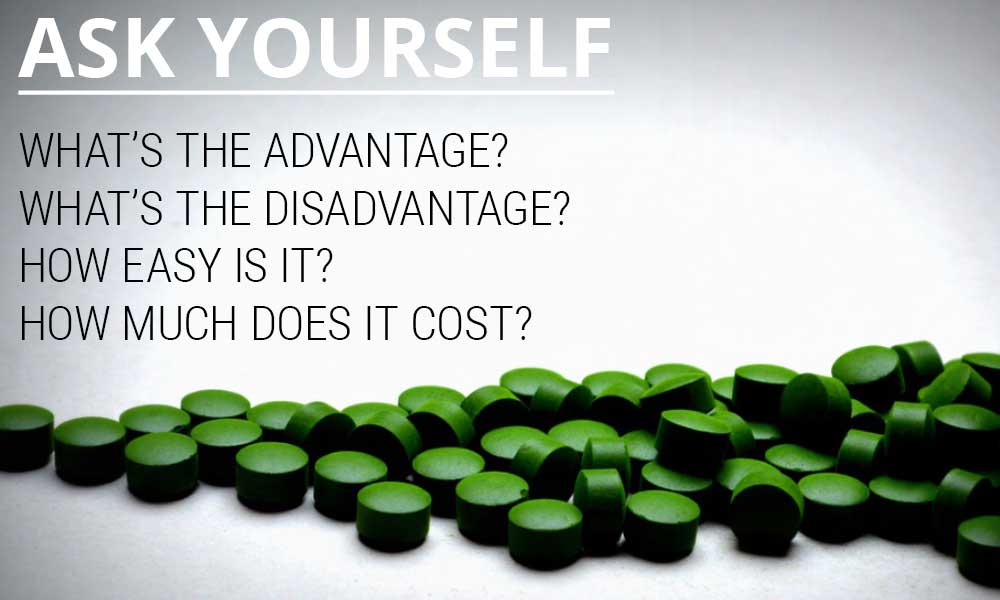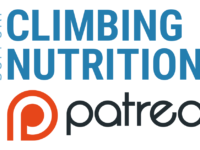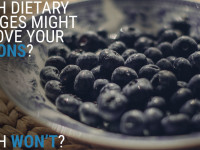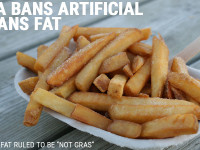There is a ton of sports nutrition advice out there, and it can be difficult to parse. In time, I hope to cover all the major aspects of sports nutrition right here on this blog (as it pertains to climbing, anyway)—but I haven’t yet, and until I do you’re going to be reading or hearing about it elsewhere. When this inevitably happens, you’re going to need a framework to determine whether something is worth doing or taking.
The first most important framework—one I hope you walk through all of life with—is a sufficiently critical mind. Be skeptical of claims that appear to upend everything we’ve ever believed, or promise unlikely benefits, or rely mostly (or wholly) on anecdote to sell you something. You probably wouldn’t believe an advertisement that claimed to have invented a brand new type of belay device based on ancient Ethiopian texts that shatter the common “truths” we’ve always known about how to brake a fall—be equally skeptical of diets or supplements that claim to “change the paradigm” or are based on (supposedly) ancient wisdom.
Beyond critical thinking, though, we’re still left with a large pile of “maybes”—diets and supplements that are not unequivocally ineffective and that could provide a potential benefit.* Here, a second framework comes into play, a framework to help you sift the large pile of “maybes” into smaller ones of “probablys” and “probably nots”, and then sift those piles into even smaller ones of “worth trying” and “not worth trying”.
How do you begin? Simple—ask yourself a few questions:
- What are the potential advantages?
- What are the potential disadvantages?
- How easy is it to achieve?
- How much does it cost?
I’ll give you some examples, based on topics I’ve already written about.
High-Fat, High-Carb, or Somewhere In-Between?
This is a good first example because your diet is always proportional—anytime you change how much of one nutrient you consume, all the others contribute proportionally less. Thus, you can choose to go high-fat, you can choose to go high-carb, but if you can’t be both at the same time because the moment you increase one the other will play a smaller role and vice-versa.
Okay, so let’s apply our questions to a high-fat diet:
What’s the potential advantage of a high-fat diet? Increased ability to burn fat (possibly upwards of double). Less reliance on the limited supply of carbohydrates for aerobic energy.
What are the potential disadvantages? Decreased ability to burn carbohydrates, including for anaerobic (power) work. Decreased storage of carbohydrates in the form of muscle glycogen. Decreased training response. Loss of power.
How easy is it? Difficult; carbohydrates are ubiquitous to food, and avoiding carbohydrates often means ditching otherwise healthy foods that are a good source of micronutrients. To become fat-adapted you must go through a roughly week-long “withdrawal” from carbohydrates that can cause headaches, severe fatigue, and other problems. Best undertaken with a dietitian or nutritionist to ensure dietary adequacy.
How much does it cost? Depends, but good-quality meats (and other high-fat foods like nuts) are typically more expensive than healthy sources of carbohydrates like fruits, starchy veggies, whole grains, and legumes, so the price may be higher than a normal or high-carb diet.
What can we synthesize from the above answers? That a high-fat diet trades in power for an increased ability to burn fat without conveying any performance advantage (even an aerobic one), is generally difficult to implement, and may cost more than a normal diet. In other words, it’s a challenging and expensive way to stay the same.
How about a high-carb diet?
What’s the potential advantage of a high-carb diet? Increased ability to burn carbohydrates aerobically. Greater strorage of carbohydrates as muscle glycogen. Increased power endurance due to improved anaerobic fuel stores.
What are the potential disadvantages? Reduced reliance on fats for fuel, therefore less fat oxidation during exercise. Depends to a greater extent on nutrient timing to ensure carb oxidation is maximized (time your carbs in conjuction with your exercise) and fat storage is minimized (don’t binge on carbs when you haven’t been exercising).
How easy is it? Not hard; carbohydrates are common to most “normal” foods. Extreme endurance athletes may find it difficult to consume enough carbohydrates from whole foods since they tend to be bulky, but most climbers should have few problems. Depending on your schedule, timing carbohydrates may be challenging.
How much does it cost? Depends, but most high-carb healthy foods are relatively cheap when bought in bulk.
So the advantage of a high-carb diet is improved power endurance and the only real disadvantage is reduced aerobic oxidation of fat during exercise (because you’re burning carbs instead)—you still burn fat at a normal rate outside of exercise. It potentially involves more careful timing and measuring of food through a day, but not more so than a regular diet, and the foods it relies upon are typically less expensive. In other words, it’s a relatively easy and cheap way to improve power.
Is Citrulline Malate Worth It?
Here’s a second example looking at a supplement instead. I purposely chose citrulline malate because A) I’ve already done a summary on it and B) it is relatively unstudied, meaning we don’t have meta-analyses or even systematic reviews to help collate large amounts of data to form a conclusion with.
What are the potential advantages of citrulline malate? Improved blood flow to muscles, increased aerobic capacity, improved phosphocreatine regeneration (thereby increasing anaerobic capacity). Delightful sour taste.
What are the potential disadvantages? Unavoidable sour taste—if you don’t like it, you really can’t avoid it.
How easy is it? Very easy—all you need to do is mix it with some water about 30 minutes to an hour before climbing, or mix it in with your sports drink or water while climbing.
How much does it cost? If you follow my advice on where to purchase it (TrueNutrition.com, use code BNRY639) and buy at least 1 kg, then it’ll set you back about 43¢ per 8 gram serving (or 14¢ per tsp you throw into a sports drink).
The looming disadvantage, of course, is that larger studies could eventually determine the above benefits null—in the meantime, though, the science we do have suggests that citrulline malate has some potential ergogenic benefits, is easy to incorporate into your climbing routine, and is relatively cheap.
Summary
There will always be topics I haven’t covered yet (or may never get to without prompting). The first, most important thing is to exercise critical thinking so you can reject obviously unfounded ideas and supplements (like an all-fruit diet or that random Chinese herb that has never been studied in humans). After you cull the irrational, though, you still need a system to determine what’s worth doing or taking so you aren’t constantly grappling with uncertainty.
What are the potential advantages? What are the potential disadvantages? How easy is it? How much does it cost?
The above framework won’t future-proof your decisions against new science, but it will help you determine the best course available based on today’s science.















Informative…